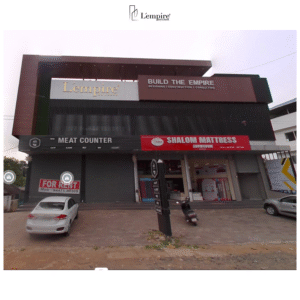Introduction:
In recent years, the construction industry has witnessed a profound transformation thanks to the integration of technology. From enhancing safety protocols to improving project efficiency and sustainability, technology has become an indispensable tool for construction professionals. In this blog post, we will explore some of the remarkable ways in which technology is revolutionizing the construction industry and shaping a smarter future.
Building Information Modeling (BIM) – Redefining Construction Planning:
Building Information Modeling (BIM) has emerged as a game-changer in construction planning. BIM utilizes 3D modeling and intelligent data to create a digital representation of a building project, enabling stakeholders to visualize and simulate the construction process beforehand. This technology allows architects, engineers, and contractors to identify potential issues, optimize designs, and streamline communication, leading to improved efficiency, reduced costs, and minimized errors.
Drones – Aerial Intelligence for Construction Sites:
Unmanned Aerial Vehicles, or drones, are taking construction site monitoring to new heights. Equipped with high-resolution cameras, drones provide real-time aerial views, allowing project managers to inspect hard-to-reach areas, track progress, and identify potential safety hazards. Drones can also generate accurate topographic maps and 3D models of construction sites, facilitating better resource allocation and precise measurements.
Internet of Things (IoT) – Connecting Construction Sites:
The Internet of Things (IoT) has ushered in an era of connected construction sites. Through the deployment of sensors, cameras, and wearables, IoT technology enables real-time data collection and analysis. This data can be utilized to monitor equipment performance, enhance safety conditions, optimize energy usage, and streamline maintenance schedules. With IoT, construction sites become intelligent ecosystems, improving productivity, reducing downtime, and enhancing overall project management.
Augmented Reality (AR) and Virtual Reality (VR) – Transforming Design and Collaboration:
Augmented Reality (AR) and Virtual Reality (VR) are transforming the way construction professionals design and collaborate. AR technology allows architects and contractors to overlay digital models onto real-world environments, enabling on-site workers to visualize designs, identify clashes, and ensure accurate installations. VR, on the other hand, offers immersive experiences that allow stakeholders to virtually walkthrough buildings before construction, making design decisions more informed and reducing costly changes during the construction phase.
Robotics and Automation – Increasing Efficiency and Safety:
Robotic systems and automation are making significant strides in construction. From bricklaying robots to autonomous construction vehicles, these technologies are automating repetitive tasks, increasing productivity, and improving safety conditions. Robotic systems can work tirelessly, significantly reducing project timelines while maintaining precision and quality. Automation also minimizes human error, making construction sites safer for workers.
Conclusion:
As technology continues to evolve, the construction industry stands at the forefront of innovation. From the early stages of planning and design to on-site execution and maintenance, various technologies are reshaping the way we build. The integration of Building Information Modeling (BIM), drones, Internet of Things (IoT), augmented reality (AR), virtual reality (VR), robotics, and automation is unlocking new levels of efficiency, safety, and sustainability in construction. By embracing these advancements, construction professionals are paving the way for a smarter, more interconnected future, where buildings are constructed with precision, agility, and environmental consciousness.



